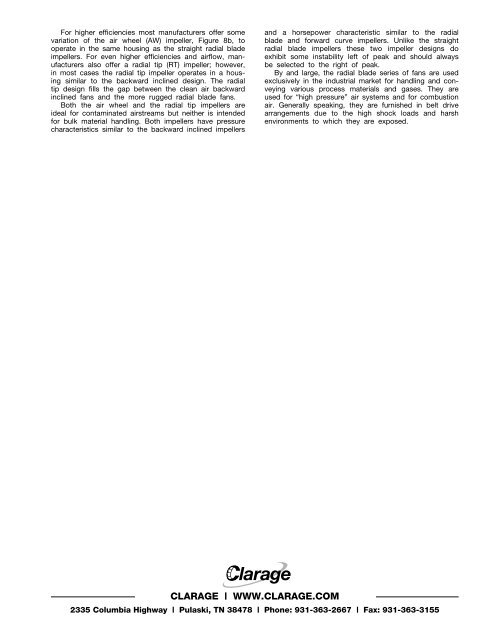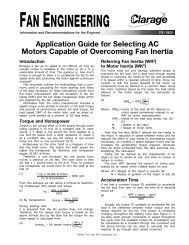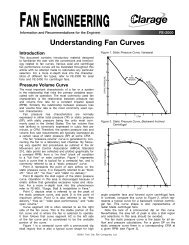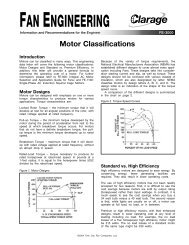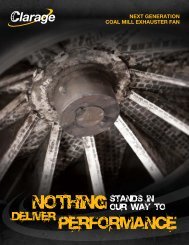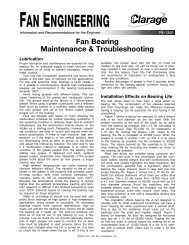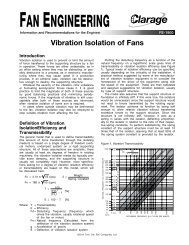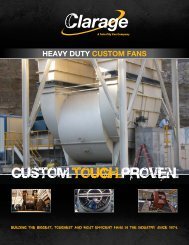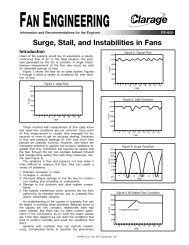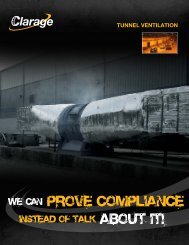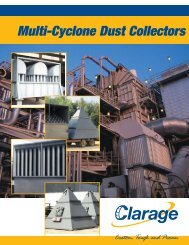FAN ENGINEERING - Clarage
FAN ENGINEERING - Clarage
FAN ENGINEERING - Clarage
Create successful ePaper yourself
Turn your PDF publications into a flip-book with our unique Google optimized e-Paper software.
For higher efficiencies most manufacturers offer some<br />
variation of the air wheel (AW) impeller, Figure 8b, to<br />
operate in the same housing as the straight radial blade<br />
impellers. For even higher efficiencies and airflow, manufacturers<br />
also offer a radial tip (RT) impeller; however,<br />
in most cases the radial tip impeller operates in a housing<br />
similar to the backward inclined design. The radial<br />
tip design fills the gap between the clean air backward<br />
inclined fans and the more rugged radial blade fans.<br />
Both the air wheel and the radial tip impellers are<br />
ideal for contaminated airstreams but neither is intended<br />
for bulk material handling. Both impellers have pressure<br />
characteristics similar to the backward inclined impellers<br />
and a horsepower characteristic similar to the radial<br />
blade and forward curve impellers. Unlike the straight<br />
radial blade impellers these two impeller designs do<br />
exhibit some instability left of peak and should always<br />
be selected to the right of peak.<br />
By and large, the radial blade series of fans are used<br />
exclusively in the industrial market for handling and conveying<br />
various process materials and gases. They are<br />
used for “high pressure” air systems and for combustion<br />
air. Generally speaking, they are furnished in belt drive<br />
arrangements due to the high shock loads and harsh<br />
environments to which they are exposed.<br />
CLARAGE | www.CLARAGE.com<br />
2335 Columbia Highway | Pulaski, TN 38478 | Phone: 931-363-2667 | Fax: 931-363-3155


